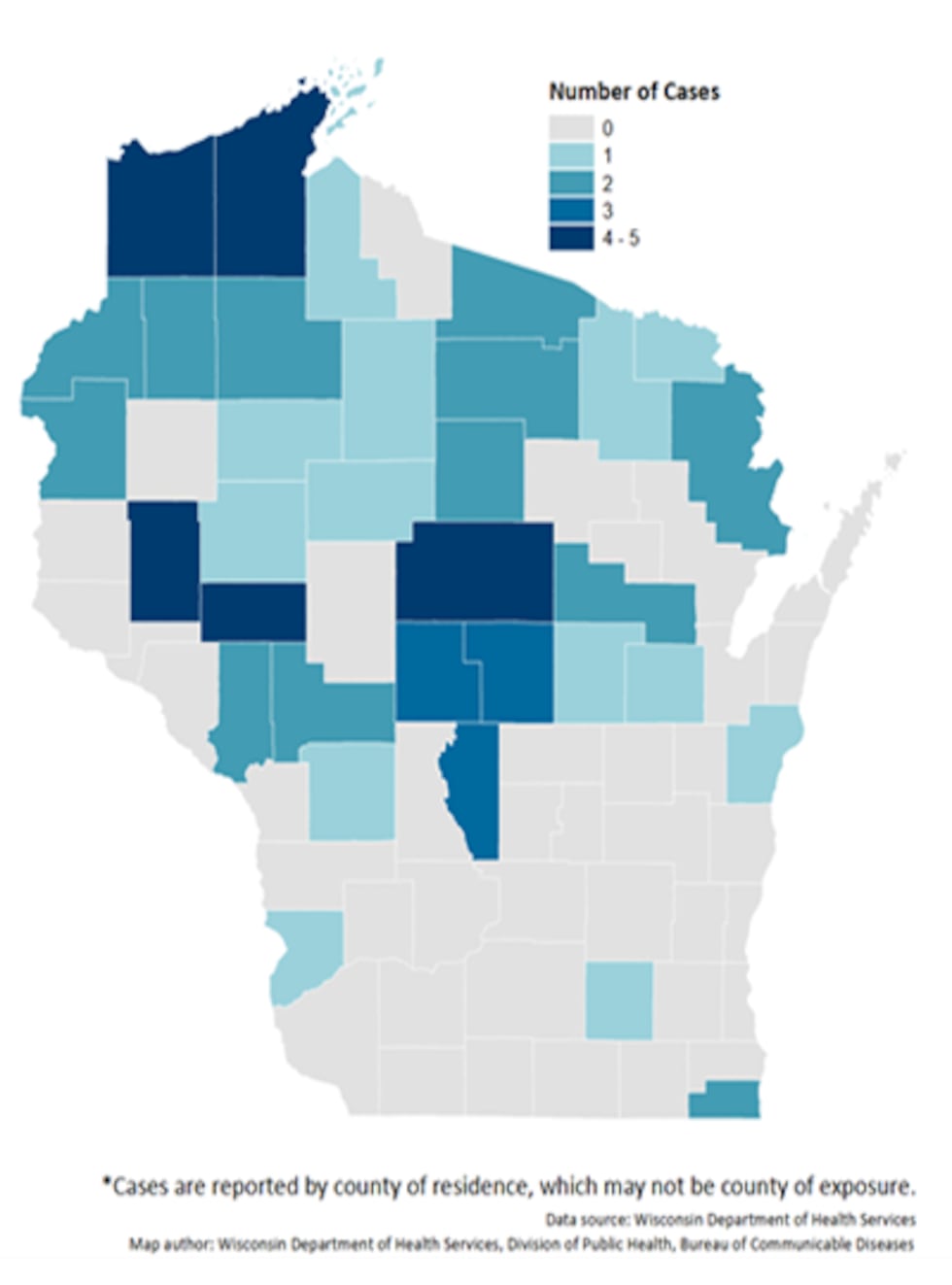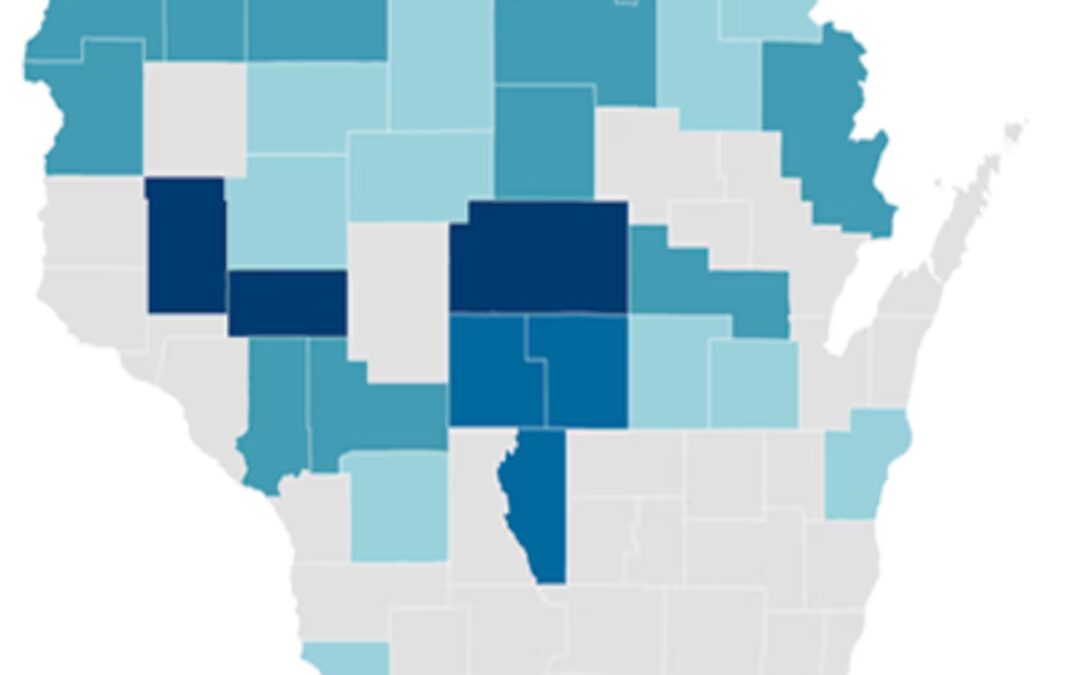WAUSAU, Wis. (WSAW) – The Wisconsin Department of Health Services (DHS) has reported that as of June 2025, there are three reported cases of Powassan virus (POWV) disease in Wisconsin adults. All three individuals were hospitalized, and one died from the infection.
What to Know
- Powassan virus is transmitted to people through an infected blacklegged (deer) tick.
- Initial symptoms include fever, headache, vomiting, and generalized weakness. The disease can progress to encephalitis, meningoencephalitis, or aseptic meningitis.
- There is no specific treatment for POWV disease, meaning early testing (see below) is the only way to properly treat any symptoms.
In 2024, 12 cases of POWV disease were reported in people in Wisconsin, the highest number of cases reported in the state in a calendar year and the second-highest cases in the United States after Minnesota (14 reported cases).
POWV is a tickborne virus spread by the blacklegged (deer) tick, the same tick that spreads Lyme disease, anaplasmosis, and several other diseases in Wisconsin. POWV infection can cause a mild febrile illness or neurologic disease that often presents as meningitis or encephalitis.
Diagnosis of POWV disease can be delayed due to nonspecific symptomology, limited commercial laboratory testing, and lack of provider awareness.
DHS recommends that health care providers:
- Consider POWV disease in patients with unexplained neurologic disease with known or possible tick exposure one to five weeks before illness onset.
- Order the appropriate diagnostic testing for patients with suspected POWV disease.
- POWV IgM testing in serum or cerebrospinal fluid (CSF), or
- POWV IgM in serum or CSF and POWV RT-PCR in whole blood, serum, or CSF, which may be particularly helpful for immunocompromised patients.
- Ensure timely reporting of POWV infections to state or local public health authorities.
- Promote tick bite prevention measures among individuals who spend time working or recreating outdoors, especially in the northern half of Wisconsin.
Background
POWV is a tickborne flavivirus that is transmitted to people by the bite of an infected blacklegged (deer) tick, Ixodes scapularis. Ticks become infected when they take a blood meal from an infected groundhog, skunk, squirrel, mouse, or other rodent. It is unknown exactly how long a tick must be attached to a person for POWV transmission to occur, but it is likely less than 12 hours and could be as little as 15 minutes. POWV can rarely be transmitted through blood transfusion.
POWV is rare, but there has been an increase in the number of cases reported in recent years. This increase could be from more people becoming infected with POWV, improvements in testing and diagnosis, or some combination of both. POWV disease can be prevented by taking measures to avoid tick bites.
Powassan surveillance
The first case of POWV disease in Wisconsin was identified in 2003. From 2003 through 2024, a total of 68 cases of POWV disease have been reported to public health. Public health surveillance for POWV disease is more likely to detect severe clinical cases, so it’s possible that mild febrile cases are significantly underreported. Cases of POWV disease are more common in the northern half of Wisconsin, where the blacklegged (deer) tick is more abundant. Marathon County has some of the highest reported cases in the state. Nationally, cases of POWV disease are most common in the Upper Midwest and Northeast.

Clinical presentation
POWV can cause asymptomatic infection, non-specific febrile illness, or severe neurologic disease. Initial symptoms commonly include fever, headache, vomiting, and generalized weakness. The disease can progress to encephalitis, meningoencephalitis, or aseptic meningitis. Risk factors for neurologic disease include immunocompromising conditions or immunosuppressive medications, old age (≥60 years), and very young age (<10 years). Approximately 10 percent of patients with neurologic POWV disease die from the infection, and about 50 percent of patients who survive experience long term neurologic sequalae.
Symptoms of encephalitis can include altered mental status, seizures, speech problems (aphasia, dysarthria), paresis or paralysis, movement disorders, and cranial nerve palsies. Symptoms of meningitis can include severe headache, nuchal rigidity, photophobia, nausea, and vomiting.
CSF findings typically include lymphocytic pleocytosis in patients with encephalitis or meningitis, with neutrophils predominating early in the disease course. CSF protein is usually normal or mildly elevated, and glucose concentration is normal.
Other causes of encephalitis and aseptic meningitis should also be considered, as appropriate (for example, herpes simplex viruses, enteroviruses, West Nile virus (WNV), La Crosse virus (LACV), and Eastern equine encephalitis virus (EEEV)).
Which patients should be tested for POWV?
Testing for POWV infection is recommended for patients with symptoms of POWV disease, especially neurologic symptoms that another etiology cannot explain, and who have known or possible tick exposure one to five weeks prior to illness onset. Providers should be aware that ticks can be active in Wisconsin anytime temperatures are above 40° Fahrenheit, including during winter months.
Testing for POWV infection is not recommended in asymptomatic individuals, including asymptomatic individuals with a known tick bite. Febrile patients with possible tick exposure should also be tested for other more common tickborne illnesses, such as Lyme disease, anaplasmosis, ehrlichiosis, and babesiosis as these diseases are treatable.
POWV is one of several arboviruses transmitted in Wisconsin that can cause neurologic disease and the only one transmitted by ticks. Other arboviruses include WNV, Jamestown Canyon virus (JCV), LACV, and EEEV, which are transmitted by mosquitoes. DHS recommends that patients suspected of having any arboviral disease, such as POWV, also be tested for other circulating arboviruses since clinical features of these diseases overlap.
https://www.wsaw.com/2025/06/24/dhs-recommends-people-test-powassan-virus-after-death-wisconsin/

